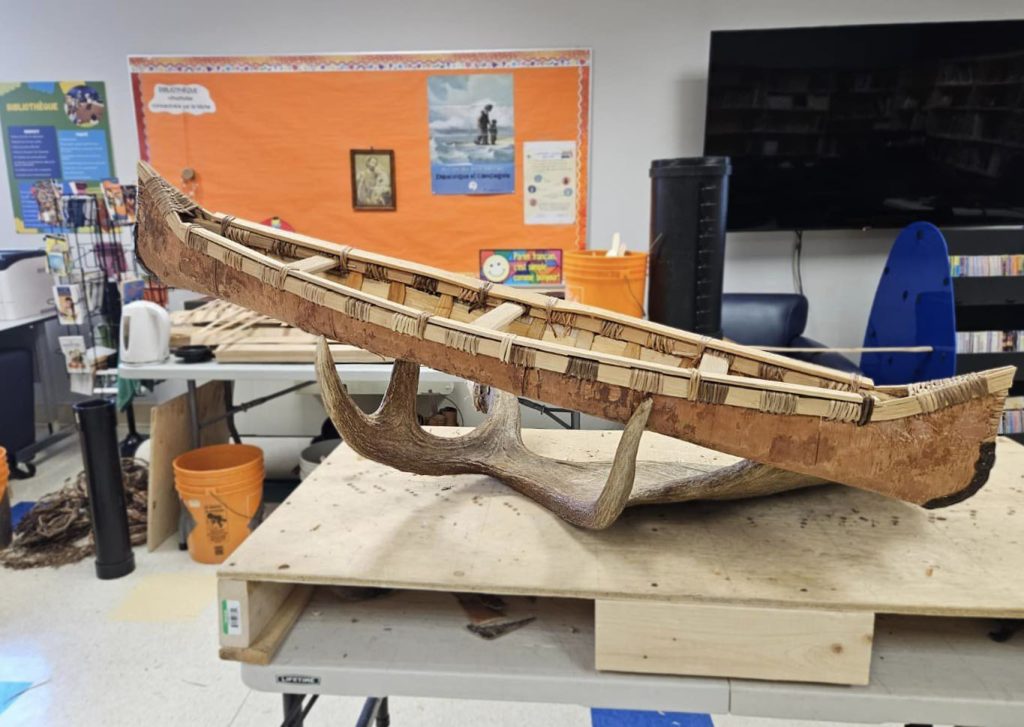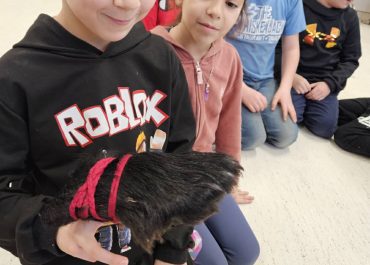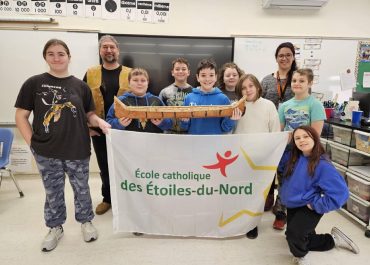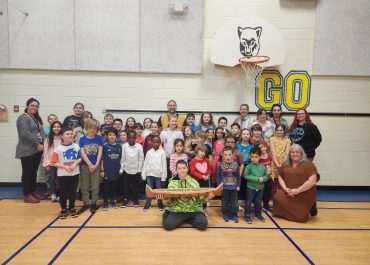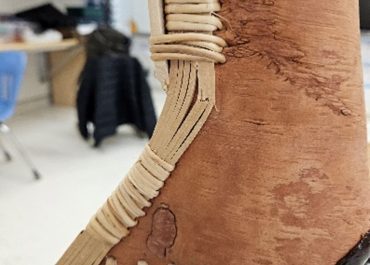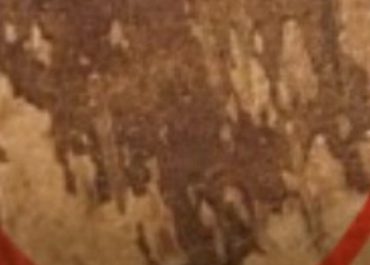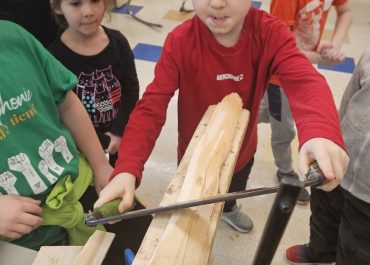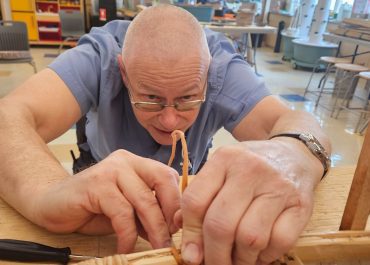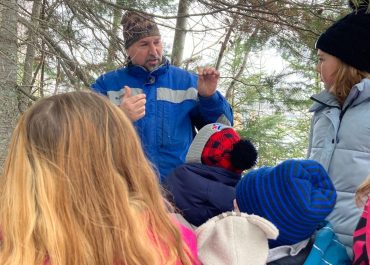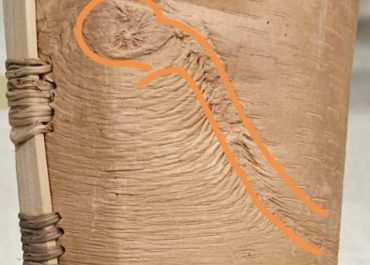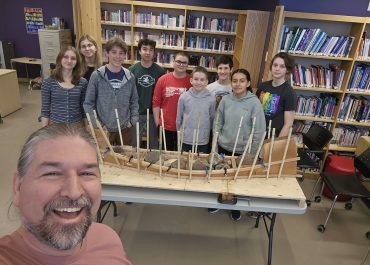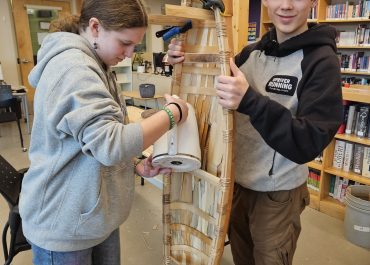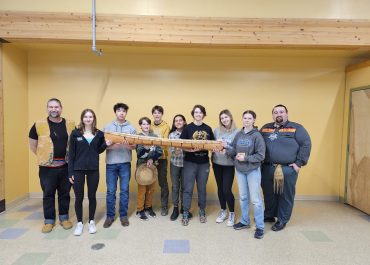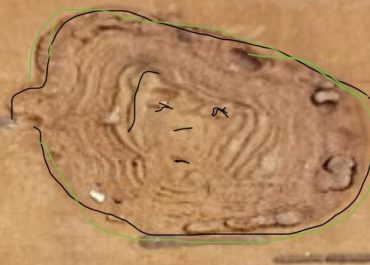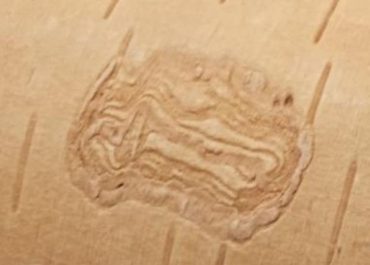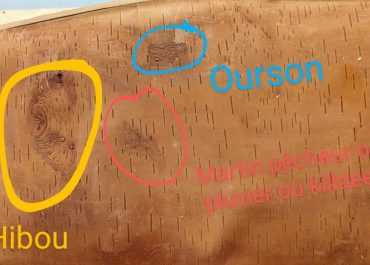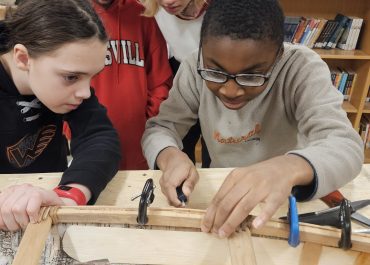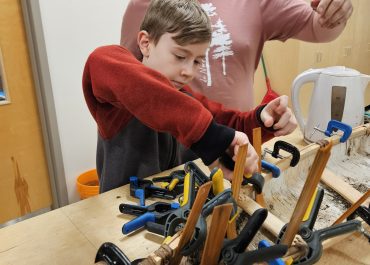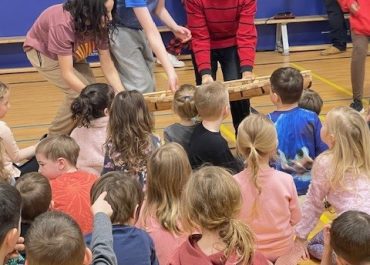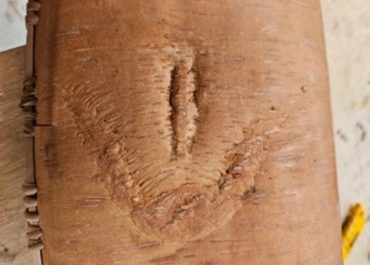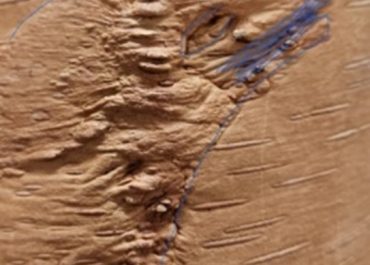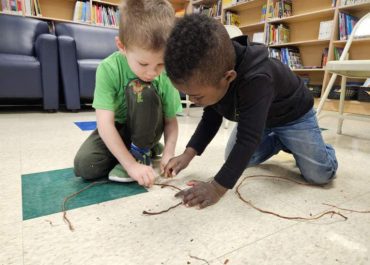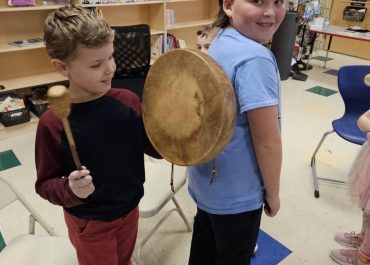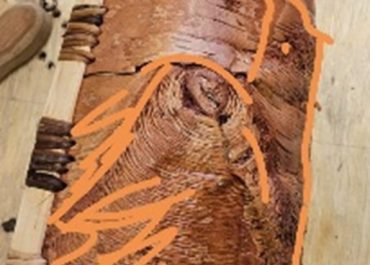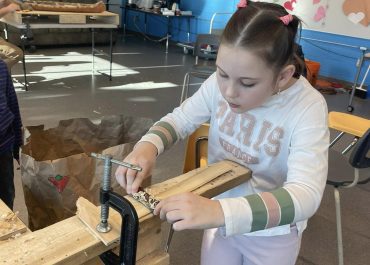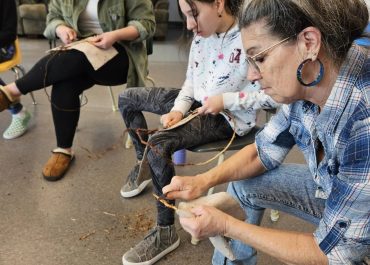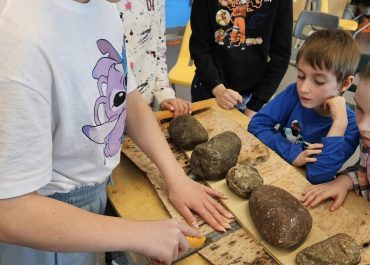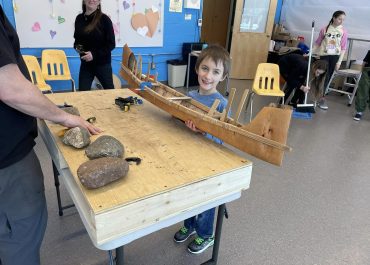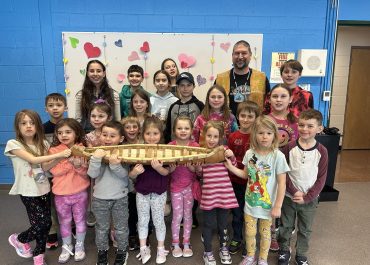Following his toured four of our ten schools last yearChristian Pilon has returned to Aurores boréales territory. From January to March, the Franco-Ontarian Métis voyageur visited our schools once again to offer a week-long birchbark canoe-making workshop to students and staff, this time in Red Lake, Dryden, Thunder Bay, Geraldton and Nakina.
Discover the names and spirits of each canoe, inspired by the features found in the bark. Each canoe has its own meaning and shares a life lesson learned.
Memenhgwaanh
At the canoe unveiling ceremony, École catholique des Étoiles-du-Nord (Red Lake) named its canoe "Memenhgwaanh" (pronounced mé-méing-gwaw), which means "butterfly". Its spirit is transformation.
"The middle of the canoe is the balance between the past and the future, it's the present," explains Christian Pilon. "Every present movement is based on our memories of the past, which affect the future. We have to find the balance between what formed us (the past) and why we're here, what we're going to form (the future). The butterfly will hatch with a transformation so that we can fly with all our memories."
The canoe also features a wolf's head and two hearts (one right-side-up, the other upside-down).
Dragonfly
In Dryden, the École catholique de l'Enfant-Jésus canoe has been named "Libellule", and its spirit is travel.
The dragonfly, thanks to its uniqueness and adaptability, reminds us that things can take time, and, like the dragonfly, "you have to give children the chance to choose when they're ready to take flight", said Christian.
"The dragonfly is very precise in its movements. When we ask for help, we also need to be precise," he explains. "This dragonfly also reminds us of our ability to transform ourselves and the capacity to adapt and shine!"
Throughout the manufacturing process, parents and community members also took part in the experiment. For Eric Piovesan, a parent at the school, it was a unique experience:
"Christian Pilon's passion for Métis culture and heritage is reflected in everything he does. I came to the session hoping to learn a new skill and left with a new understanding of Aboriginal culture and a new knowledge of nature."
Community member Percy Cameron, on the other hand, was amazed to learn that the canoe was made exclusively from materials sourced from Mother Nature. "It was a great honor to have the opportunity to work on the canoe. I was amazed at how everything came together to create the canoe and the contours."
Jiibay-miikana
Pronounced jè-bye-mii-ka-naThe Anishnabe word for spirit path, or Milky Way, was the choice of name for the canoe at École secondaire catholique de La Vérendrye (Thunder Bay). Its spirit is Niigani-binesi (pronounced nee-ga-nee bi-nay-s) meaning "the great bird that guides from the front".
"Like our earthly life, we are surrounded and supported by the visible and invisible to help us. The Milky Way is the last way to the Creator," Christian explains. "You have to get away from the city and stay up late to be able to see and appreciate the Milky Way."
At the canoe unveiling ceremony, he also recounted that the bark contains several other symbols of transformation: a face in a wampum shell, a skeleton's head with part of its spine, a person pointing with his lips, a kingfisher, a dragon, the little bear cub and an owl.
Nèsèwin
At École catholique Franco-Supérieur (Thunder Bay), the canoe was named "Nèsèwin" (pronounced win, which means "breath". Its name reminds us that the first thing we do in life is to take a breath in, and that we end with a breath out. Its spirit is Waabamegor large white fish, including the beluga.
Christian explains that "we choose what we let in (inhale), and what we let out (exhale). Breathing in also means creation, and breathing out means letting go or sharing."
The bark also reveals a beluga whale, a reminder of the importance of daily deep breathing. "She's very comfortable expressing her emotions. She's sociable with her community and family," explains Christian. The whale also reminds us of the importance of communication and maintaining relationships, as well as the importance of taking time for oneself without distractions.
The woman of justice is also visible inside the whale image.
Agawaatebiigishin
Pronounced a-gah-waa-tay-bii-gish-inThe name of the canoe at École St-Joseph (Geraldton) means "it creates a reflection in the water". Its spirit is Ginébig dodemor the snake.
"Reflection is how we see ourselves, in the mirror and in the water, but also in the eyes of our family and loved ones. We are also a reflection of our environment. The environment dictates growth; in a child, his environment determines his growth," explains Christian.
He adds that "bark speaks volumes; of good and bad weather; bark is not just a part of the birch, but it is the memory of the tree and the forest." That of this canoe is marked by the animals that came: the bison, the fox, the man in a cave with a fire torch, the green heron, the eagle, and even a bear's paw.
Asigan
Meaning "to bring her together", Asigan (pronounced a-ci-gane) was the choice of name for the Notre-Dame-des-Écoles (Nakina) canoe. Its spirit is Wazhashk (pronounced wha-jasque), or muskrat.
"Gathering means being with our loved ones, but it also means being alone and gathering all that nourishes us to recharge and regain our strength," Christian explains. "All week, I saw the sharing that the Francophones did with the Anglophones, and it was beautiful to see. It's important to come together and help each other build family, community and esteem among young people."
In the bark, we find the muskrat, one of the animals that can adapt to both water and land. Christian recounts that "when the moon is full, the muskrat can travel between the spiritual world and our world".
There's also a bear or a turtle emerging from its wintering place, the moon or the sun, and snow dunes.
The canoes will be on display at each school, so come and see them on your next visit.
This learning project was funded by the Ontario Arts Council's Artist-in-Residence program.
